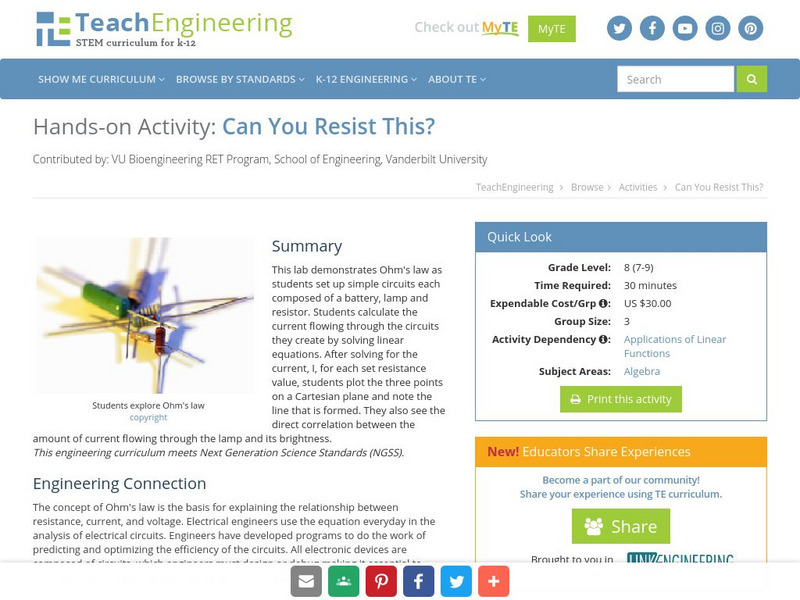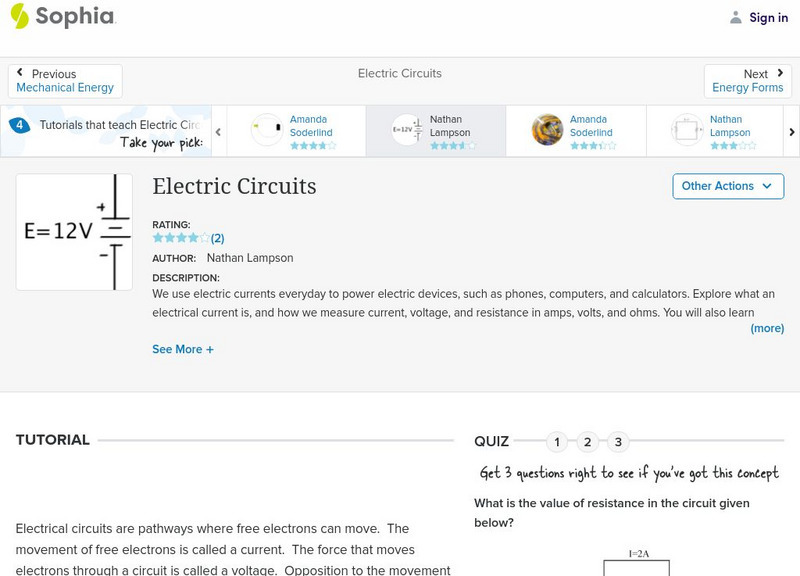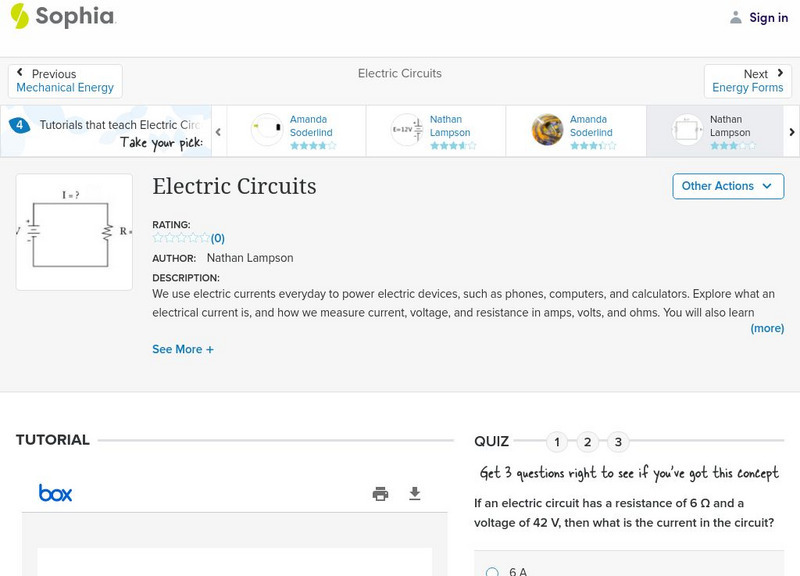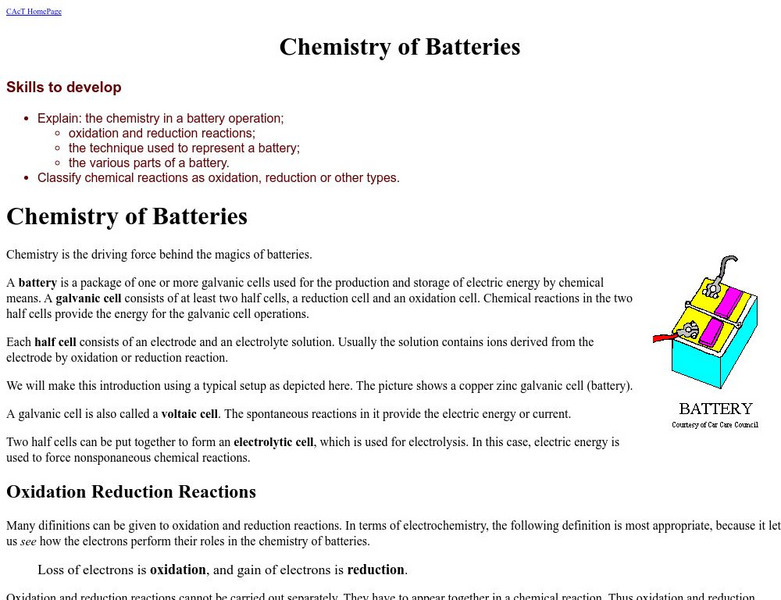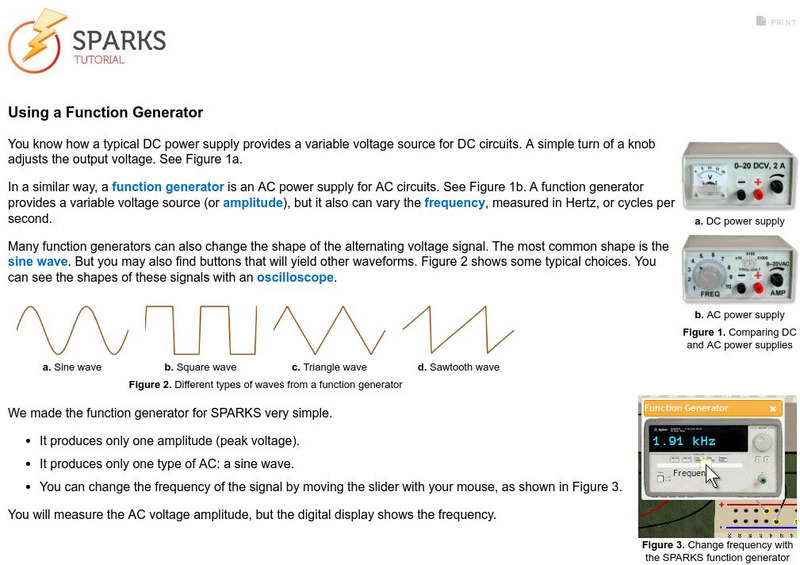Hi, what do you want to do?
TeachEngineering
Teach Engineering: Can You Resist This?
This lab demonstrates Ohm's law as students set up simple circuits each composed of a battery, lamp and resistor. Students calculate the current flowing through the circuits they create by solving linear equations. After solving for the...
TeachEngineering
Teach Engineering: Saltwater Circuit
Students build a saltwater circuit, which is an electrical circuit that uses saltwater as part of the circuit. Students investigate the conductivity of saltwater, and develop an understanding of how the amount of salt in a solution...
TeachEngineering
Teach Engineering: Whose Field Line Is It, Anyway?
Students teams each use a bar magnet, sheet of paper and iron shavings to reveal the field lines as they travel around a magnet. They repeat the activity with an electromagnet made by wrapping thin wire around a nail and connecting...
TeachEngineering
Teach Engineering: The Electric and Magnetic Personalities of Mr. Maxwell
Students are briefly introduced to Maxwell's equations and their significance to phenomena associated with electricity and magnetism. Basic concepts such as current, electricity and field lines are covered and reinforced. Through...
Georgia State University
Georgia State University: Hyper Physics: Resistor Combinations
At this site from Georgia State University parallel and series connections of resistors are explained and illustrated. Equations for computing the overal voltage, current, and resistance of such circuits are given and explained.
Science and Mathematics Initiative for Learning Enhancement (SMILE)
Smile: Ohm's Law
For the teacher planning a lesson or for the student preparing for a project or presentation. This page describes a series of simple activities related to the voltage-current-resistance relationship.
Sophia Learning
Sophia: Electric Circuits: Lesson 2
This lesson will explain how to calculate voltage, current, and resistance in simple electric circuits. It is 2 of 4 in the series titled "Electric Circuits."
Sophia Learning
Sophia: Electric Circuits: Lesson 4
This lesson will explain how to calculate voltage, current, and resistance in simple electric circuits. It is 4 of 4 in the series titled "Electric Circuits."
ClassFlow
Class Flow: Electricity
[Free Registration/Login Required] Students can use this Flipchart to learn and apply Ohm's law to basic circuitry problems. Students are introduced to the relationship among voltage, current, and resistance, and then apply their newly...
CK-12 Foundation
Ck 12: Physics Simulation: Power Lines
[Free Registration/Login Required] Learn about the relationship between electric potential, current, and resistance in the context of high-voltage AC power lines using this interactive simulation. A PDF worksheet and a video tutorial are...
Khan Academy
Khan Academy: Electrical Engineering: Introduction
Some basic concepts to introduce the electrical engineering course. Become familiar with engineering numbers and notation, and learn about the two most important electrical quantities: current and voltage.
Concord Consortium
Concord Consortium: Measuring Ac Circuits With a Dmm
Find out how the SPARKS DMM can measure AC voltage and current.
Oswego City School District
Regents Exam Prep Center: Electricity: The Mouse Cheese Analogy
This page uses a mouse and cheese analogy to show the relationships involved in electricity through currents and charges. Among the topics covered by the analogy are voltage, resistance and electromagnetism.
Physics Aviary
Physics Aviary: Practice Problems: Rl in Ac Problem
Determine the rms current and voltage in an RL circuit powered by an AC power supply.
Physics Aviary
Physics Aviary: Practice Problems: Rlc in Ac Problem
Determine the rms current and voltage in an RLC circuit powered by an AC power supply.
Concord Consortium
Concord Consortium: Dc Circuits: Series Parallel Resistances (Sparks 3)
Answer questions regarding voltage drops across resistors and currents through them in such circuits. Practice calculating the effective resistances of a set of resistances in series and parallel.
Wikimedia
Wikipedia: Ohm's Law
Wikipedia provides information on Ohm's Law, stating that the voltage drop is proportional to the current running through it.
University of Waterloo (Canada)
Computer Assisted Chem. Tutorial/chemistry of Batteries
A superb explanation of how a battery works. Discusses the associated chemistry which explains how a battery produces a voltage. Includes a series of "Confidence Building Questions."
TeachEngineering
Teach Engineering: Completing the Circuit
In the everyday electrical devices we use - calculators, remote controls and cell phones - a voltage source such as a battery is required to close the circuit and operate the device. In this hands-on activity, students use a battery,...
Physics Aviary
Physics Aviary: Practice Problems: Rc in Ac Problem
Determine the rms current and voltage in an RC circuit powered by an AC power supply.
Physics Aviary
Physics Aviary: Simple Circuit Lab
This lab is designed to have students investigate the relationships between voltage, resistance and current in a circuit with only one passive component. The batteries in this simulation can be varied from ideal batteries to batteries...
Physics Aviary
Physics Aviary: Parallel Circuit Lab
This lab is designed to have students investigate the relationships between voltage, resistance and current in a parallel circuit with up to three passive components. The batteries in this simulation can be varied from ideal batteries to...
Concord Consortium
Concord Consortium: Using a Function Generator
See how a typical DC power supply provides a variable voltage source for DC circuits.
Concord Consortium
Concord Consortium: Dc Circuits: Parallel Resistances (Sparks 2)
Explore circuits with resistors in parallel and answer questions regarding voltage drops across resistors and currents through them in such circuits.





